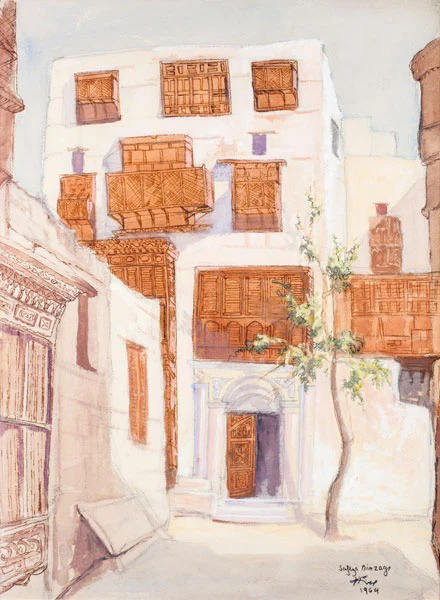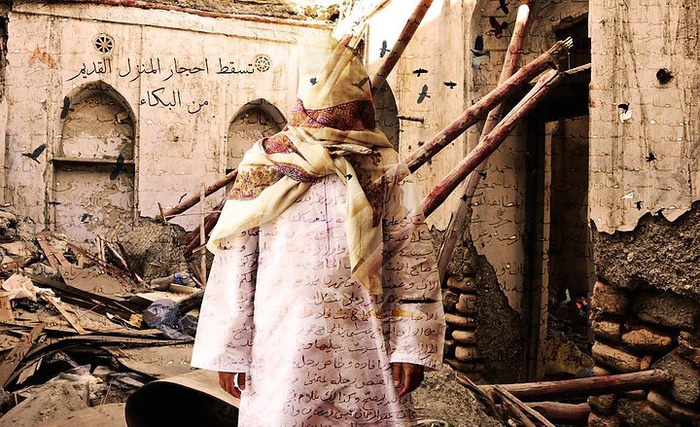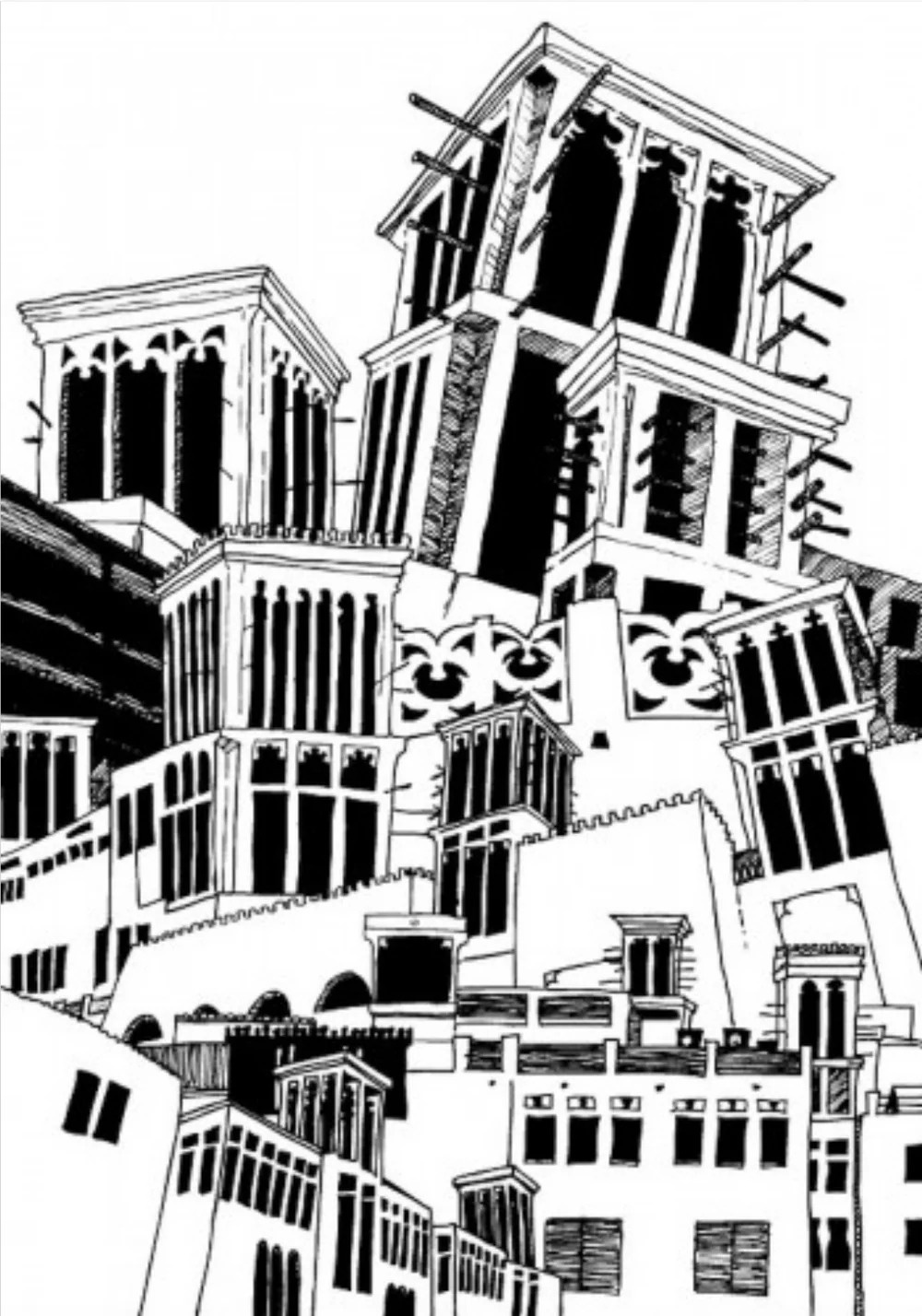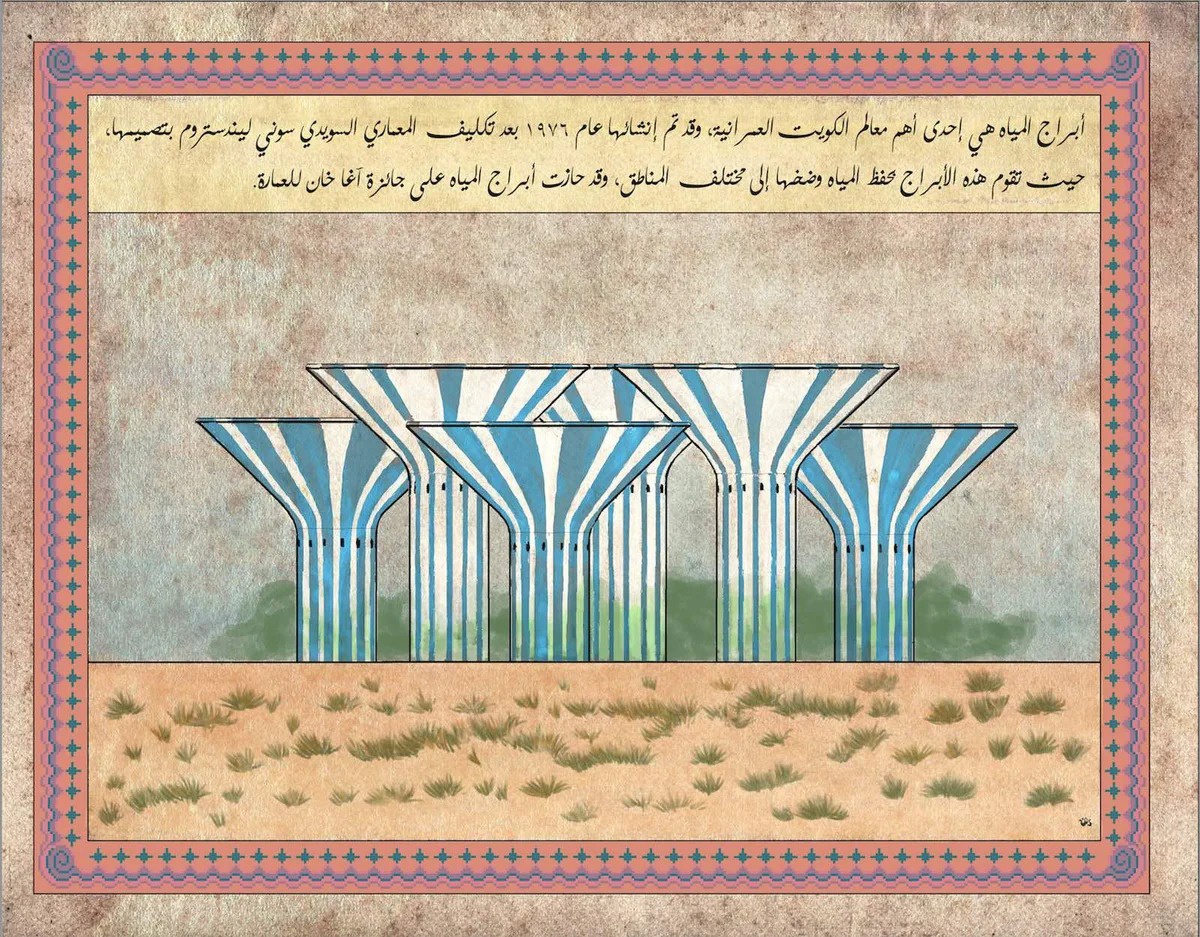
Across the globe, international artists have consistently depicted their own cities, capturing the essence of street life and urban landscapes. From Hiroshige's vibrant scenes of Tokaido in "Otsu" (1840), to Caillebotte's portrayal of "Paris Street" (1877), and Hopper's depiction of New York's railway in "Approaching a City" (1946) (presented above). These artists have provided glimpses into the heart of their respective cities.

"Untitled" Safeya Binzagar, (1964)
But how does this artistic tradition transfer to the Gulf region? The Gulf artists share a common practice of observing their surroundings and ensuring their art reflects the unique culture, identity, cities, and architectural elements of the region. In Saudi Arabia, for example, pioneers of Saudi art have taken a stance to document the ever-changing urban landscape. Safeya Binzagar's "AlMahmal" (1972) and her "Untitled" (1964) (presented above) are notable works that illustrate elements of the local Hejazi house, preserving traditional elements and layouts. Another Saudi painter, Khaleel Hassan, portrays the traditional urban form of Jeddah in his dynamic painting "When the Moon Lands" (~1970-80s), blending it with a luminous moon at its core. In the United Arab Emirates, artist Abdulqader Alrais is recognized for his works capturing the disappearing Bastakiya neighborhood, a place close to his heart. His artwork "Barjeel" (1987) showcases the treasured windtower with a slightly cracked roof, symbolizing the demise of the building and the broader erasure of identity.
As time progresses, the artists' focus shifts from documenting their surroundings to preserving their memory. Saudi painter Abdulhalim Radwi's paintings, such as "Al Sham District" (1985) and "Neighborhood" (1986), depict the streetscapes of Jeddah, aiming to evoke nostalgic memories in the face of rapid modernization. A more focused approach emerges, with artists documenting destruction and decay. Saudi artist Ali Alruzaiza's "The Remaining Beauty" (1987) and Alrais' "Decay" (1989) both capture traditional houses on the verge of collapse. These artists seek to showcase the beauty of vernacular architecture amidst the emerging modernist trends.
Throughout the 1990s, artists continued their documentation efforts with various approaches. Kuwaiti artist Ibrahim Ismail's "The Souq" (1995) and Saudi artist Nabeela Al-Bassam's "Houses" (1997-1998) utilize a multi-layered approach in painting depicting different Gulf elements into one canvas such as the Kuwaiti national dress or Sadu weaving. Alrais' "Impressions" (1992-9X) series reveals different forms stacked upon one another, showcasing the reinterpretation of Khaleeji architectural elements and Gulf urban forms.

"Reflections from Memories" Hassan Meer, (2008)
The Omani artist Hassan Meer recalls his former city of Muscat through a collage approach, one that combines photographs with digital art. In particular, “Reflections from Memories” (2008) (presented above) showcases a structure that is about to be demolished with Arabic text which translates to “The old house’s walls collapse from weeping”. These different interpretations express the nostalgia withheld within architects on the former version of their cities, houses, or even neighborhoods.
In 2018, nostalgia ensues the Qatari artist Yousef Ahmed Al-homaid (commonly known as Yousef Ahmed) in entangling his memories of a city he remembers in the series titled, “When I remember the past” (2018-19), which was exhibited in Msheireb Museums. The artworks were featured on the same grounds that held similar architectural language. A language that was pan-Khaleeji (pan-GCC) in essence.

"Windtower" Khalid Mezaini, (2010)
In recent times, artists continue to explore Gulf’s architecture through different approaches. The Emirati artist Khalid Mezaina's "Windtower" (2010) (presented above) reinterprets the UAE's iconic Barjeels or wind towers using silk screen techniques. Emirati painter Mohamed Kazem's famous series "Neighbors" (2018) depicts split air conditioners sticking outside houses, symbolizing the late modernism period of UAE architecture. On the digital front, Kuwaiti artist Dana Al Rashid's latest digital exhibition (2022) (presented below) carries forward the artist's role in documenting architectural heritage, portraying the demolition of Al-Sawaber, celebrating Kuwait's Water Towers, and capturing urban sceneries of now-demolished ice skating rinks.
Dana Al Rashid, (2022)